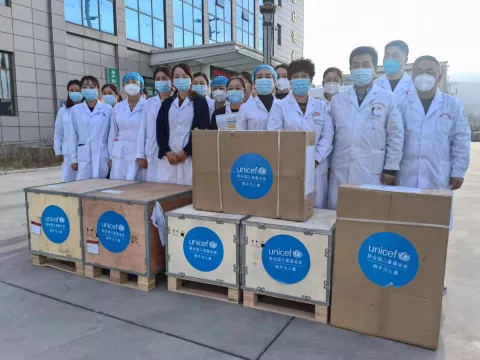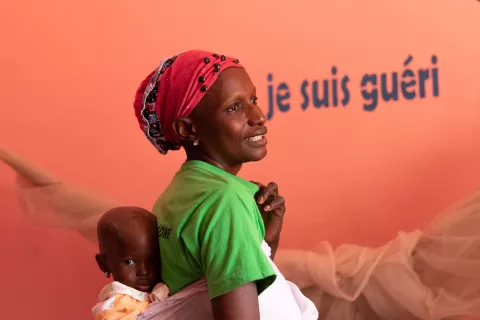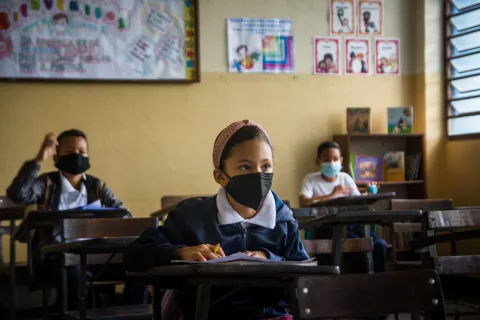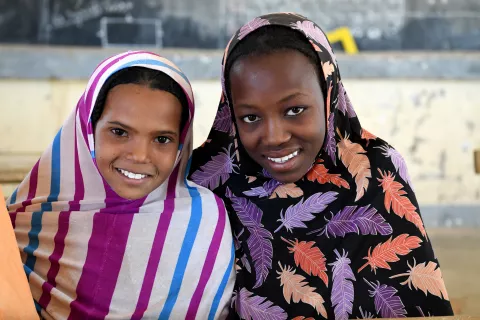A wake-up call
COVID-19 and its impact on children’s health and wellbeing
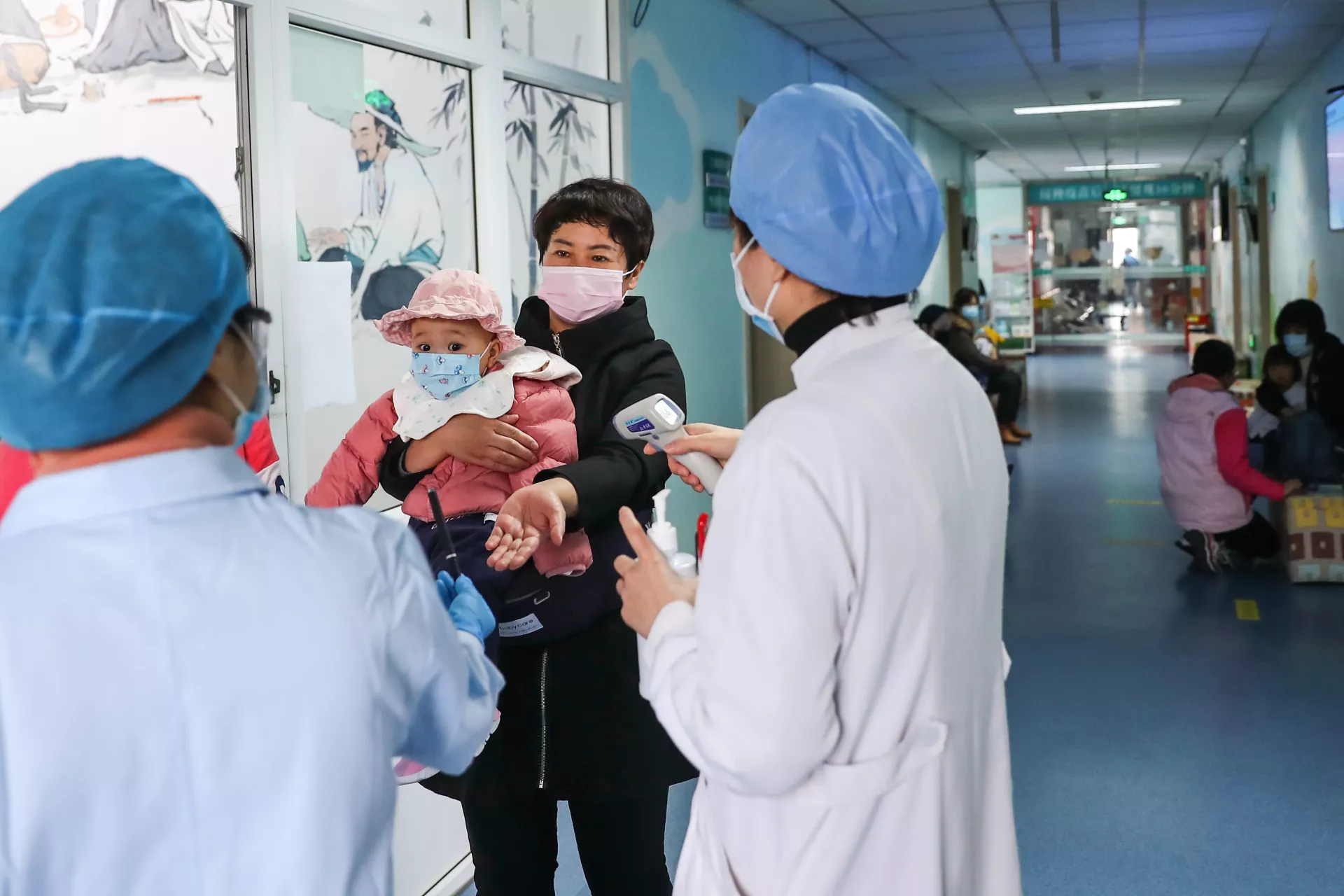
- Available in:
- 中文
- English
As cases of COVID-19 surge worldwide and threaten to overwhelm life-saving health services, the survival of mothers and children is at great risk.
In The Lancet Global Health, Timothy Roberton and colleagues present startling new evidence on the potential rise in maternal and child mortality in low-income and middle-income countries if essential health services are disrupted as a result of COVID-19. Building on lessons learned from previous outbreaks of Ebola virus disease and severe acute respiratory syndrome (SARS), the authors estimate a devastating increase in the numbers of maternal and child deaths resulting from reductions in routine health service coverage.
Left unchecked, these reductions (due to, for example, disruptions in medical supply chains or the availability of human and financial resources) along with declines in the uptake of health services by communities fearful of infection will be more catastrophic for mothers and children than COVID-19 itself. The projection of an additional 1.2 million child deaths and 56700 maternal deaths in 118 countries if coverage of essential services drops by around 45% for 6 months is alarming. It is also avoidable if we act now.
These findings reinforce the multi-part approach that UNICEF has adopted from the start of the outbreak. First, we are working to prevent COVID-19 transmission and treat those who fall sick. Second, we are working to address the effects of the policy responses aimed at containing the spread, including maintaining routine health services for all children and mothers, ensuring continuity of learning, keeping mothers and children safe and protected from violence, and scaling up social protections to keep children and their families afloat. Third, we are working to strengthen the systems that underpin all of these services.
The evidence is already showing the negative effects of COVID-19, and the unprecedented measures to contain it, on maternal and child health. Children are at risk not only of infection, but also of losing or being separated from family members and caregivers. Mothers and children are affected by the disruption of essential preventative and curative support and supplies resulting from suspensions in services and transportation systems, as well as by financial constraints.
Constrained access to clinics, schools, social workers, water, and sanitation is a particular threat to the most vulnerable populations, and the lack of child protection and broader social services is particularly harmful to women and children in need of safety.
Looming above all of these concerns is the economic impact of both the pandemic control measures governments are taking and the predicted knock-on effects of the projected global recession: reduced incomes, public and private debt, and reduced access to goods will affect many aspects of household health and nutrition. In short, these effects threaten to roll back the hard-won progress countries have made in recent decades.
As a global community, overcoming the negative impacts of the pandemic will require focus on six key areas of action and investment. First, we must keep children healthy and well nourished by providing supplies and protective equipment, which must reach health workers and affected communities. At the same time, life-saving maternal, newborn, and child health services, routine vaccinations, and access to HIV treatment must be maintained.
Second, we must urgently prioritise funding and support for maintaining and strengthening water, sanitation, and hygiene. The combined work of governments and the private sector will be required to increase the practice of handwashing across the board, tapping into local innovation and global partnerships.
Third, learning and connectedness among children must be maintained, and support must be given to governments to provide no-technology, low- technology, and digital solutions. Already before the crisis, UNICEF was working on an initiative6 with partners to extend digital infrastructure to ensure all children can learn, no matter who and where they are, and this work needs to be brought quickly to scale.
Fourth, we must recognise parents and families as essential front-line workers. They need support through social protection measures that include cash and nutrition support. Fiscal response packages must target women and children. More than ever, everyone needs access to paid family leave, paid sick leave, and childcare. Fifth, services to prevent and address gender-based violence—including counselling and support—must be designed and delivered. These services should be designated as essential, and moved online. The current crisis makes women and children even more vulnerable to violence.
Finally, we must not forget about refugee and migrant children or children affected by conflict. An effective COVID-19 response is one that includes all children in a country—whatever their status.
As we think through new and innovative ways to support children and their families, it is encouraging to see that many local initiatives have already begun. These initiatives push us all to consider the new opportunities that this crisis creates for communities to recover better, build stronger systems, and orient these services to reach all people, rich and poor alike.
This kind of long-term thinking can help us to prevent further loss of life from COVID-19 and to reduce the effects of the global recession, while making progress towards the healthier, more equal, resilient, and sustainable future envisioned in the UN Sustainable Development Goals.
This future is not automatic. It begins by heeding the findings of models like those presented by Roberton and colleagues, and by realising that the full effects of the disease on health and wellbeing of children reach beyond the immediate illness. These effects threaten global progress in a number of areas, as well as the lives and rights of a generation of children.
By working together as a global community, we can learn from these data and invest in future-oriented solutions now, and spur a lasting recovery that will benefit children and communities for decades to come.
References
- Roberton T, Carter ED, Chou VB, et al. Early estimates of the indirect effects of the COVID-19 pandemic on maternal and child mortality in low-income and middle-income countries: a modelling study. Lancet Glob Health 2020; published online May 12. https://doi.org/10.1016/S2214-109X(20)30229-1. UNICEF. Coronavirus disease (COVID-19): resources for practitioners. https:// www.unicef.org/coronavirus/covid-19-resources-practitioners (accessed May 7, 2020).
- UN. Policy brief: the impact of COVID-19 on women. April 9, 2020. https:// www.unwomen.org/-/media/headquarters/attachments/sections/library/ publications/2020/policy-brief-the-impact-of-covid-19-on-women-en. pdf?la=en&vs=1406 (accessed May 7, 2020).
- UN. Policy brief: the impact of COVID-19 on children. April 15, 2020. https:// unsdg.un.org/sites/default/files/2020-04/160420_Covid_Children_Policy_ Brief.pdf (accessed May 7, 2020).
- UN. Shared responsibility, global solidarity: responding to socio-economic impacts of COVID-19. March, 2020. https://unsdg.un.org/sites/default/ files/2020-03/SG-Report-Socio-Economic-Impact-of-Covid19.pdf (accessed May 7, 2020).
- UNICEF. UNICEF’s approach to digital health. https://www.unicef.org/ innovation/sites/unicef.org.innovation/files/2018-11/UNICEF%27s%20 Approach%20to%20Digital%20Health%20released%2022%20Oct%20 2018.pdf (accessed May 7, 2020).
- UNICEF. Coronavirus disease (COVID-19) information centre.https://www. unicef.org/coronavirus/covid-19 (accessed May 7, 2020).


